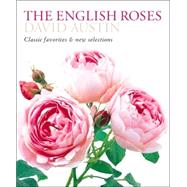
| Preface | p. 6 |
| The Origins and Nature of An English Rose | |
| The Rose | p. 8 |
| The Idea of the English Rose | p. 12 |
| The Ancestors of the English Rose | p. 18 |
| The Qualities of the English Roses | p. 28 |
| The Art of Fragrance | p. 48 |
| The First English Roses | p. 56 |
| A Gallery of English Roses | |
| The Old Rose Hybrids | p. 70 |
| The Leander Group | p. 132 |
| The English Musk Roses | p. 172 |
| The English Alba Hybrids | p. 206 |
| The Climbing English Roses | p. 218 |
| The English Cut-Flower Roses | p. 236 |
| Some Earlier English Roses | p. 238 |
| English Roses in the Garden | |
| The English Rose as a Garden Plant | p. 242 |
| English Climbers in the Garden | p. 260 |
| Rose Gardens | p. 266 |
| English Roses in the House | p. 280 |
| The Future of English Roses | p. 290 |
| Growing English Roses | p. 296 |
| Index | p. 300 |
| Trade mark rights of English Roses | p. 304 |
| Acknowledgements and credits | p. 304 |
| Table of Contents provided by Ingram. All Rights Reserved. |
The New copy of this book will include any supplemental materials advertised. Please check the title of the book to determine if it should include any access cards, study guides, lab manuals, CDs, etc.
The Used, Rental and eBook copies of this book are not guaranteed to include any supplemental materials. Typically, only the book itself is included. This is true even if the title states it includes any access cards, study guides, lab manuals, CDs, etc.